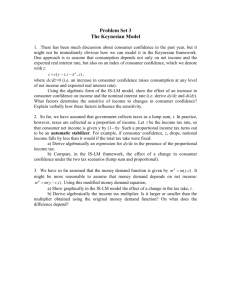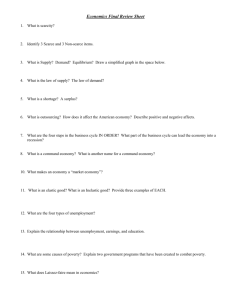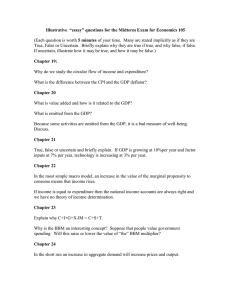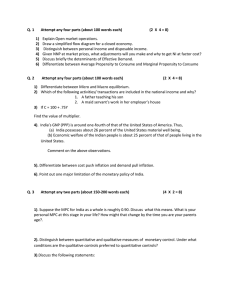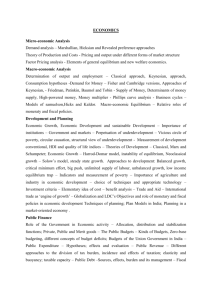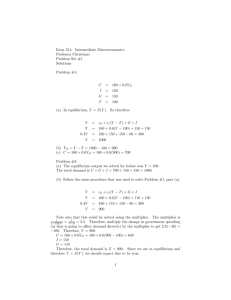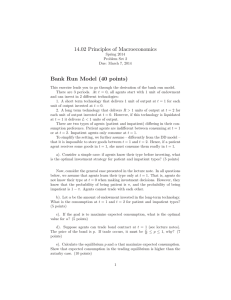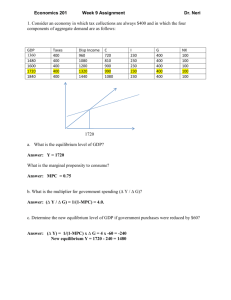Macroeconomic Theory
advertisement
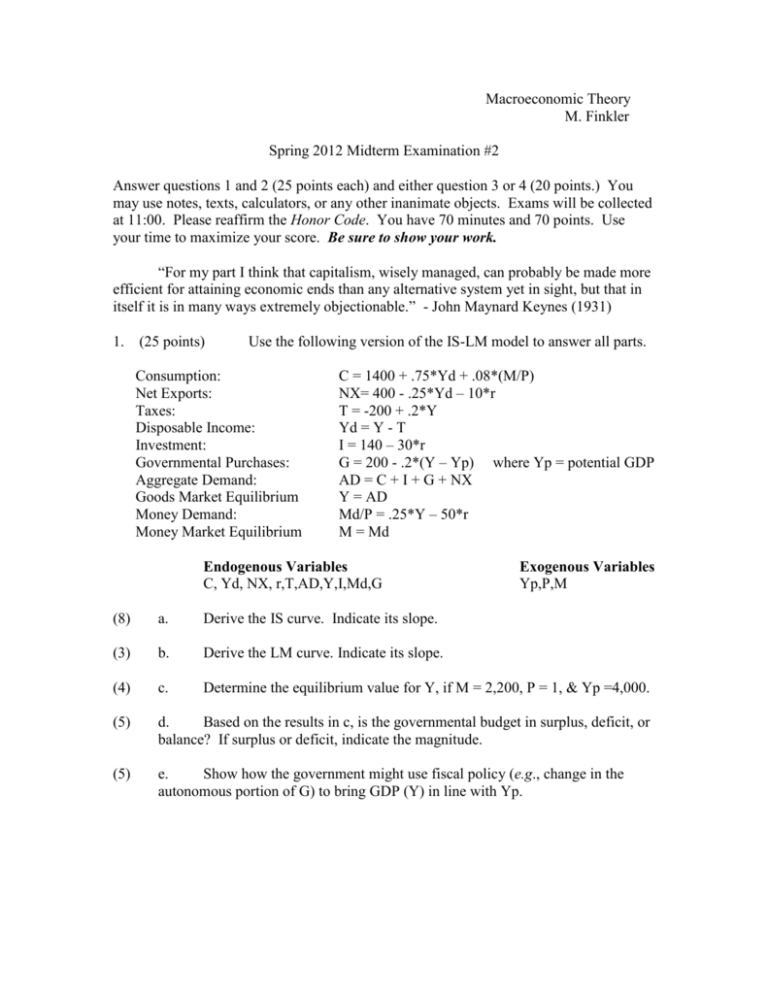
Macroeconomic Theory M. Finkler Spring 2012 Midterm Examination #2 Answer questions 1 and 2 (25 points each) and either question 3 or 4 (20 points.) You may use notes, texts, calculators, or any other inanimate objects. Exams will be collected at 11:00. Please reaffirm the Honor Code. You have 70 minutes and 70 points. Use your time to maximize your score. Be sure to show your work. “For my part I think that capitalism, wisely managed, can probably be made more efficient for attaining economic ends than any alternative system yet in sight, but that in itself it is in many ways extremely objectionable.” - John Maynard Keynes (1931) 1. (25 points) Use the following version of the IS-LM model to answer all parts. Consumption: Net Exports: Taxes: Disposable Income: Investment: Governmental Purchases: Aggregate Demand: Goods Market Equilibrium Money Demand: Money Market Equilibrium C = 1400 + .75*Yd + .08*(M/P) NX= 400 - .25*Yd – 10*r T = -200 + .2*Y Yd = Y - T I = 140 – 30*r G = 200 - .2*(Y – Yp) where Yp = potential GDP AD = C + I + G + NX Y = AD Md/P = .25*Y – 50*r M = Md Endogenous Variables C, Yd, NX, r,T,AD,Y,I,Md,G Exogenous Variables Yp,P,M (8) a. Derive the IS curve. Indicate its slope. (3) b. Derive the LM curve. Indicate its slope. (4) c. Determine the equilibrium value for Y, if M = 2,200, P = 1, & Yp =4,000. (5) d. Based on the results in c, is the governmental budget in surplus, deficit, or balance? If surplus or deficit, indicate the magnitude. (5) e. Show how the government might use fiscal policy (e.g., change in the autonomous portion of G) to bring GDP (Y) in line with Yp. 2. Consider a Solow-type growth model with the following production function as well as the other equations in Model 1g. Y = K1/3H2/3 with H = E*L and E = the level of skill or education (4) a. Write the production function in terms of output/unit of human capital (H) (8) b. Determine the steady-state (long run equilibrium) value of output per unit of human capital. (5) c. (4) d. If s= .1, n=.01, g=.02, and δ=.05, what would be the steady state values for output per unit of human capital and output per unit of labor? (4) e. If the depreciation rate were to double from the level indicated in part d, what would be the impact on output per unit of human capital? On output per laborer? 3. True, false, or uncertain. Believers in Keynesian economics (including those who believe in Models 2, 3, or 4) argue that policy-makers should use fiscal policy to balance the federal budget. If true, explain why. If false, how would the statement need to be changed to make it true? If uncertain, what would you need to add to make the statement true? 4. The idea of a multiplier is central to Keynesian economics. a. Contrast the balanced budget multiplier (BBM) on GDP in Model 2 with that for Model 3. Explain which behavioral assumptions would need to be made about the multiplier in Model 3 to make it equivalent to that in Model 2? (Note: do more than just write down constants and values.) How fast does output per labor grow in this model? (Explain why.) b. How would you expect the BBM in Model 4 to differ from that in Model 3? Why? c. Does existence of a “liquidity trap” increase, decrease, or not affect the BBM in Model 3? Explain.

